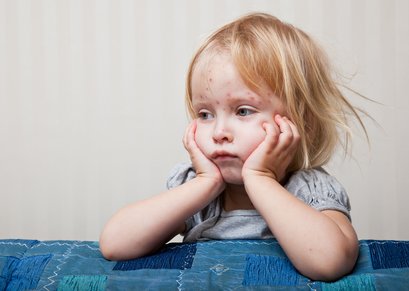Measles

Measles is one of the most common viral diseases in infants around the world. Although vaccination programs have achieved temporary interruptions of virus spread epidemic outbreaks have been reported in vaccinated populations. The partial success of the measles vaccine has made diagnosis of this disease more difficult and more important. The most severe complications are acute measles postinfection encephalitis and subacute sclerosing panencephalitis. The maximun levels of antibodies are reached 2 weeks after the onset of the rash or 4 weeks after vaccination; IgG titers decline two-fold over the next 6 months and then remain quite stable.
Clinical characteristics: Measles is a respiratory disease caused by a virus. The disease of measles and the virus that causes it share the same name. The disease is also called rubeola.
Measles is very rare in countries and regions of the world that are able to keep vaccination coverage high. In North and South America, Finland, and some other areas, endemic measles transmission is considered to have been interrupted through vaccination. There are still sporadic cases of measles in the United States because visitors from other countries or US citizens traveling abroad can become infected before or during travel and spread the infection to unvaccinated or unprotected persons.
Measles virus normally grows in the cells that line the back of the throat and lungs. Measles causes fever, runny nose, cough and a rash all over the body. Measles spreads through the air by breathing, coughing or sneezing. It is so contagious that any child who is exposed to it and is not immune will probably get the disease.
Diagnosis: Laboratory diagnosis of measles can be done with confirmation of positive measles IgM antibodies or isolation of measles virus RNA from respiratory specimens. Observation of Koplik's spots and fever is also diagnostic of measles.
Treatment: There is no specific treatment for measles. Most patients with uncomplicated measles will recover with rest and supportive treatment.

